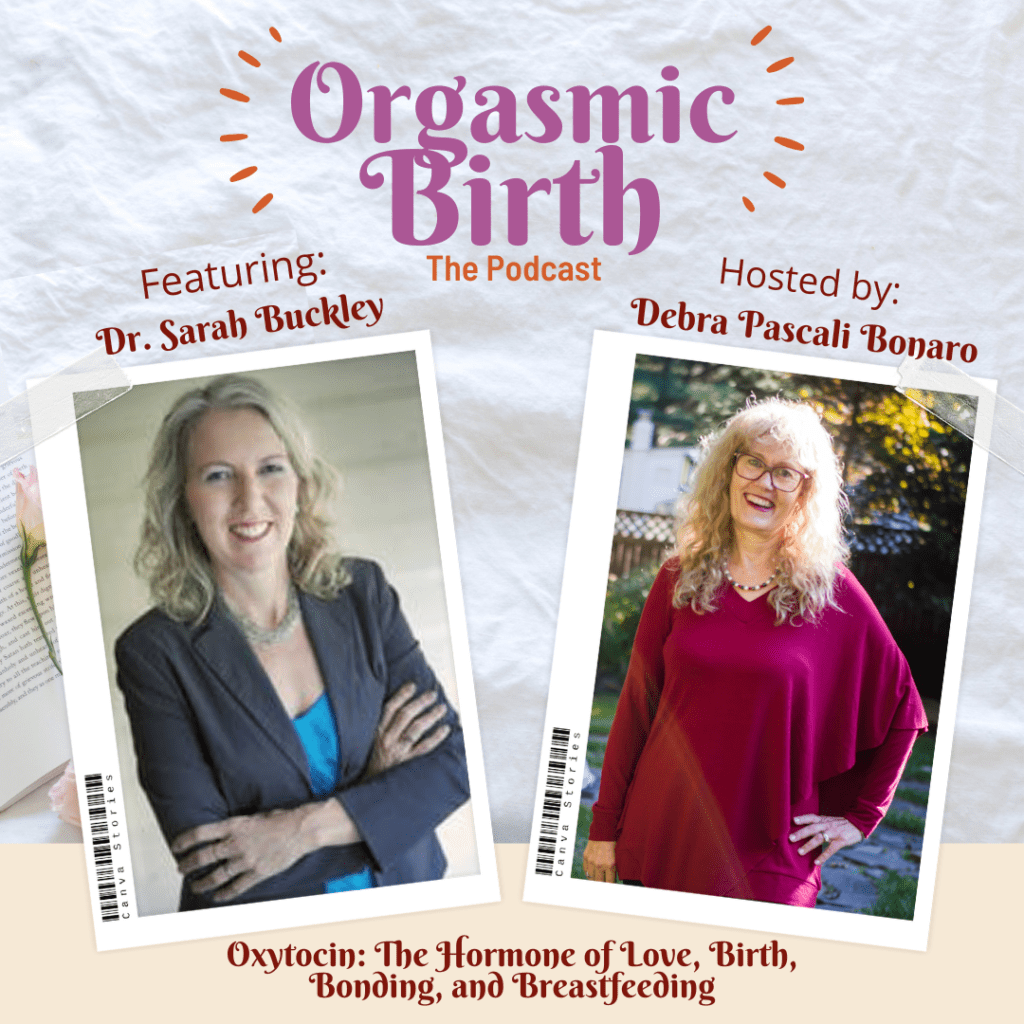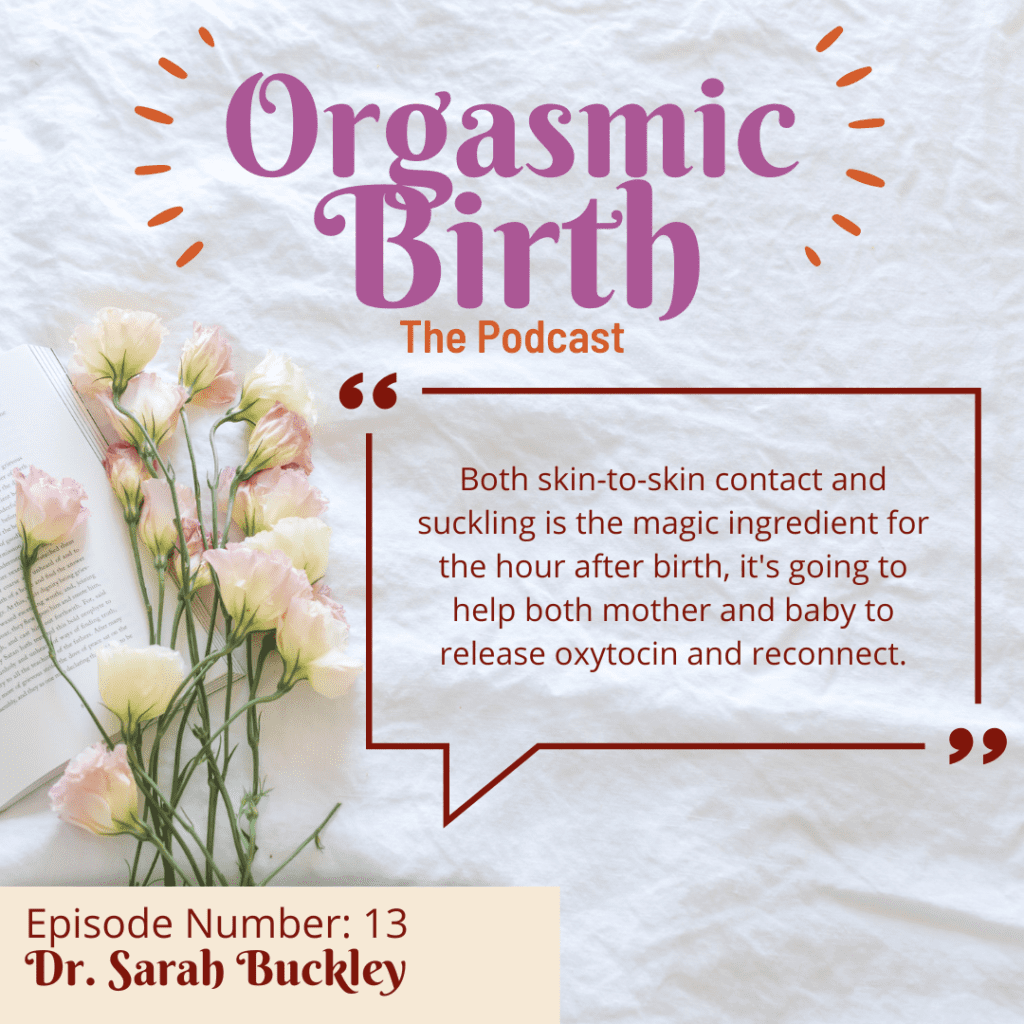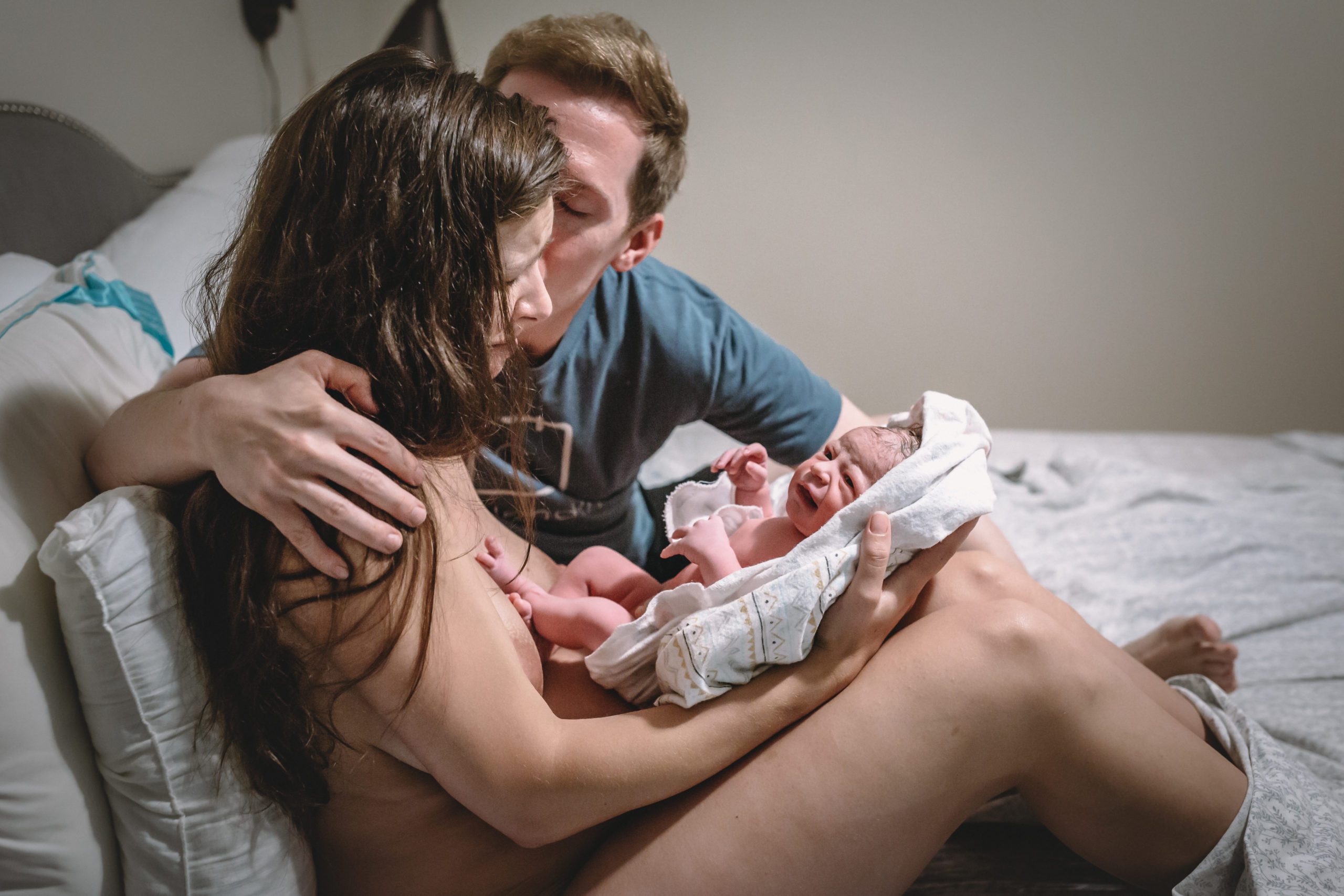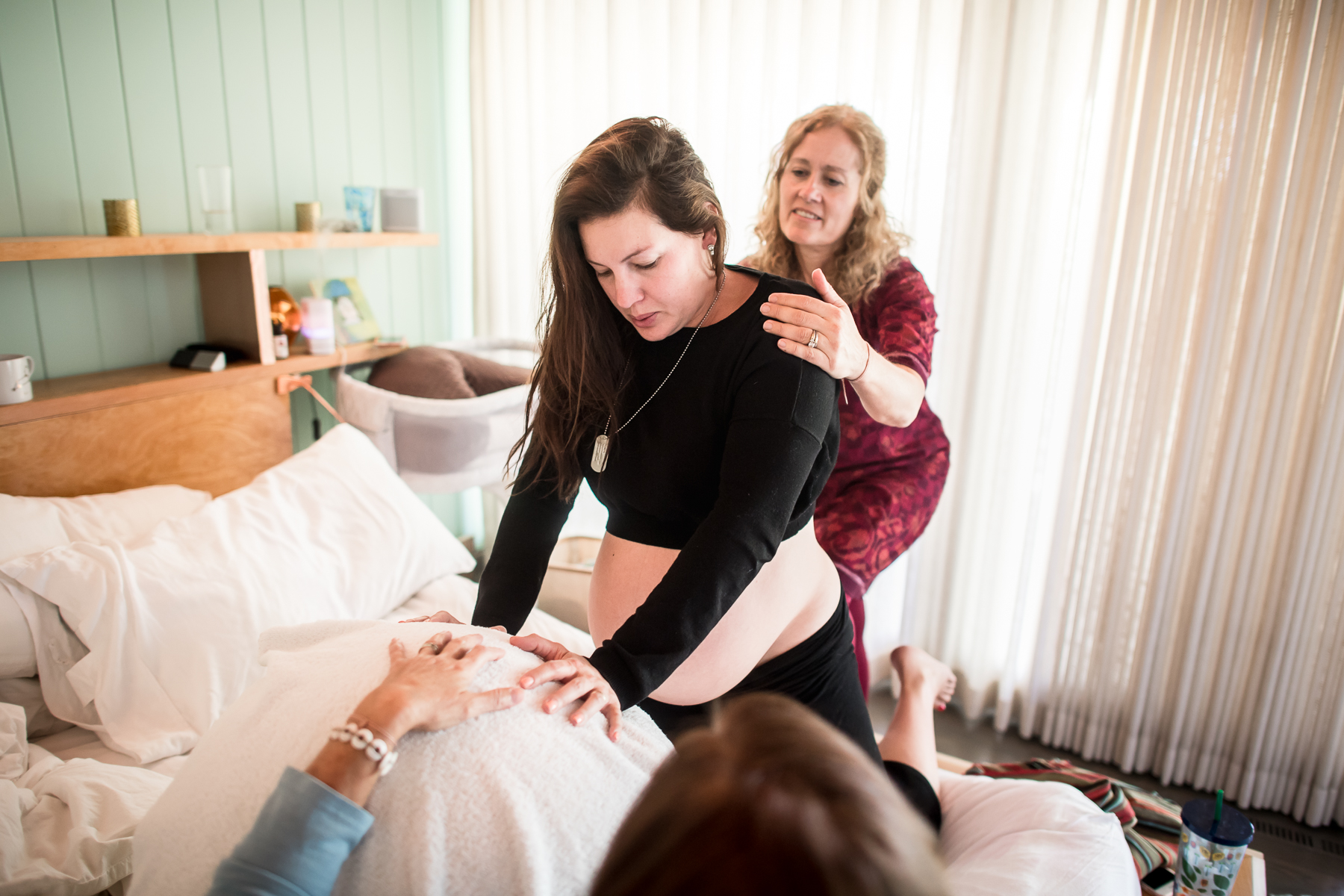
How significant is the role of oxytocin in our bodies during labor and after birth? Dr. Sarah Buckley joined us in Episode 4 to talk about the hormones of Love, Sex and Childbirth. Today, Dr. Buckley is back to get in-depth on the roles of hormones when interventions are needed and on how to fill the hormonal gap in labor and after birth. Today is essential information to help you make informed decisions about induction and understand the differences between natural and synthetic oxytocin.
Dr. Sarah Buckley is trained as a GP (family physician) with qualifications in GP obstetrics. She has been writing and lecturing to childbirth professionals and parents since 1997 and is the author of the internationally best-selling book Gentle Birth, Gentle Mothering. Sarah has a special interest in the hormones of physiological labor and birth and the impacts of interventions. In 2015 she completed an extensive report on this topic, Hormonal Physiology of Childbearing, published with Childbirth Connection (US). She is currently a Ph.D. candidate at the University of Queensland, researching oxytocin in labor and birth and the impacts of maternity-care interventions. She has co-authored several papers on oxytocin in labor, birth, and breastfeeding. Sarah is also the mother of four children, all born at home and now in their teenage years and beyond. She lives on the semi-rural outskirts of Brisbane.
In this episode:
- Hormones of labor and birth include oxytocin, which is responsible for contractions, pain relief, stress reduction, and reward and pleasure activation.
- Oxytocin is released in the brain during labor and breastfeeding, and it helps reduce stress, and switch on dopamine receptors.
- Interventions in childbirth can create hormonal gaps that impact sexual arousal, orgasm, and breastfeeding.
- Having a birth companion, such as a midwife or doula, can help birthing moms feel safer and more secure.
- Low doses of oxytocin infusions do not increase the mother’s oxytocin levels much above what she would naturally produce in labor.
- When doses get high, synthetic oxytocin could counteract the calming and natural pain relief, causing stress for the mother.
- Hypoxia (low oxygen levels for the baby) is inevitable during labor and babies have evolved mechanisms to protect themselves.
- Synthetic oxytocin can cause strong contractions to be closer together and compromise the baby’s ability to cope.
- The physiological onset of labor is a complex process that is influenced by many different factors, including hormones.
- If labor is induced, the mother’s readiness is not as high and she may need to use more stimulating methods to induce labor.
- Epidurals can interfere with the hormones that are necessary for the onset of labor, leading to a slower or even stop in the process.
- Skin-to-skin contact and breastfeeding are important ways to fill in the gap.
Key Takeaways:
- Oxytocin, the well-known hormone of labor and birth, is susceptible to hormonal gaps
- A private and safe space is needed to release oxytocin
- Being in an unfamiliar place can make labor slow down
- Labor is designed to overall be a positive experience
- Be wary of synthetic oxytocin as it may disrupt hormonal balance
- When the mother is not ready to induce labor, stimulating methods are needed
- The hormonal gap needs to be filled after birth to help the mother and baby reconnect
“Labor is designed to overall be a positive experience.” – Dr. Sarah Buckley
“There are signals that pass between mother and baby that they are ready for labor, they are coordinated. Preparation for labor includes a dramatic increase in oxytocin receptors in the uterus. The mother’s uterus becomes very sensitive to oxytocin in the lead up to labor so in her natural physiologic onset she doesn’t need to produce much oxytocin to trigger contractions but when being induced it’s a different scenario you don’t have that peak readiness. ” – Dr. Sarah Buckley

Prefer to watch? Our podcast is also available on youtube
Subscribe to our Youtube podcast playlist and ring the bell for notifications
Our acclaimed programs transform pain and fear into power and pleasure

For Parents
Ensure you are positively prepared for a safe, satisfying, and pleasurable birth and a loving, intimate relationship as a parent. From planning your unique birth experience to reconnecting with your sexuality after birth, our programs offer exactly what you need!
Our resources will empower you!
© Gwen Schroeder |Rebirth Photography

For Doulas
Be at the forefront of the new paradigm of birth as a sought-after doula, trained by one of the world’s most well-known leaders in pregnancy, birth, and postpartum. Our courses offer continuing education credit, mentorship, and inspiration to expand your practice with tools and tips for Orgasmic Birth and parenting with pleasure.
You’ve come to the right place!
© Monet Nicole

